Lactose Free Milk Market Size
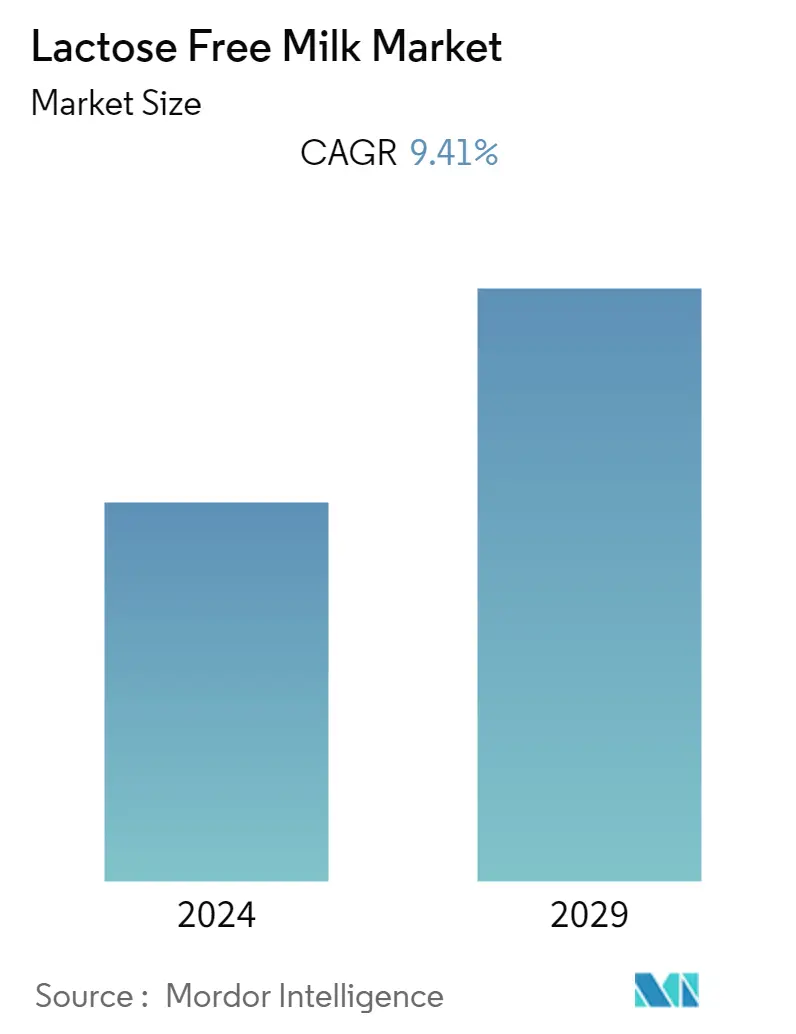
| Study Period | 2019 - 2029 |
| Base Year For Estimation | 2023 |
| CAGR | 9.41 % |
| Fastest Growing Market | Asia-Pacific |
| Largest Market | North America |
| Market Concentration | Medium |
Major Players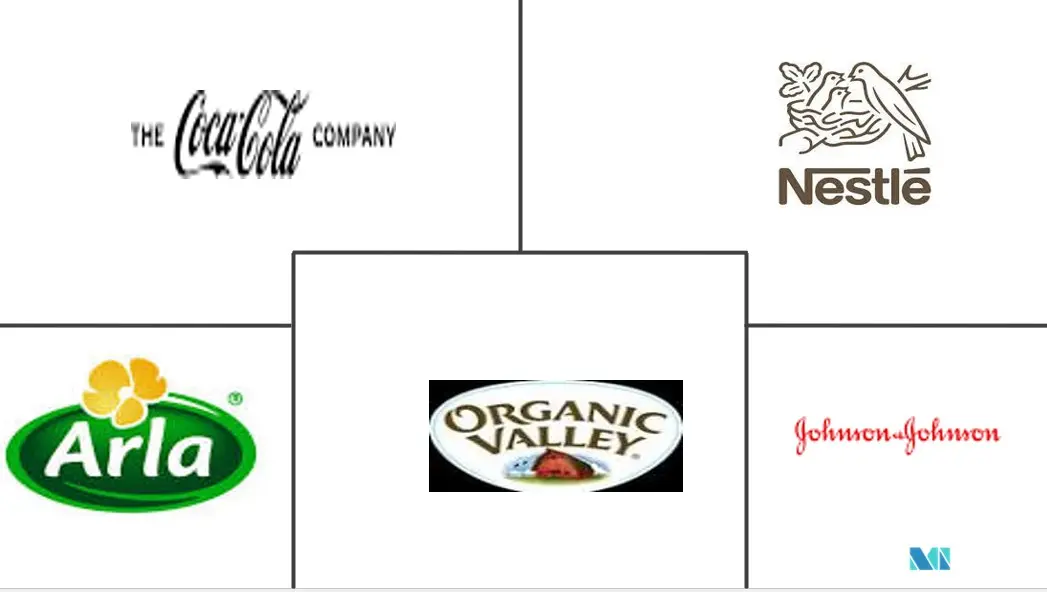
*Disclaimer: Major Players sorted in no particular order |
Lactose Free Milk Market Analysis
The lactose free milk market is projected to register a CAGR of 9.41% during the forecast period, 2022-2027.
The increasing prevalence of lactose intolerant population and growing demand for reduced added sugar or no added sugar products are expected to boost the sales of lactose-free milk across the globe. There's a strong demand for lactose free milk from developed countries as customers are shifting from conventional dairy to lactose-free dairy and other plant-based milk alternatives as a result of increased health concerns. According to the National Center for Biotechnology Information (NCBI), nearly 65% of the global population is prone to lactose intolerance. This, in turn, has increased the demand for lactose free milk across the globe.
On account of the growing prevalence of chronic and lifestyle diseases, consumers are becoming aware of the effects of the consumption of synthetic ingredients. As a result, there has been an increase in the demand for organic dairy products, which is, in turn, augmenting the growth of organic lactose-free milk globally.
Lactose Free Milk Market Trends
This section covers the major market trends shaping the Lactose Free Milk Market according to our research experts:
Growing Lactose Intolerant Population
The shift in consumer demand for healthy on-the-go food products, including nut butter, is due to diverse reasons, such as changing lifestyles and a rise in the working population coupled with health factors, like lactose intolerance, and heart diseases. For example, In the United Kingdom, one and two in every ten people have lactose intolerance. Adding on, according to the British Nutrition Foundation in the United Kingdom, Sweden, the Netherlands, Belgium, and Ireland, 5% of the population is thought to suffer from any degree of lactose maldigestion.
Moreover, the growing number of lactose intolerant newborns around the globe has resulted in an increased need for substitute products to meet their nutritional needs. Thus, companies are expanding their product lines with innovative products to meet the growing consumer demand. For example, LACTAID milk contains different nutrients such as calcium, Vitamins A, D, and B12, potassium, riboflavin, and protein.
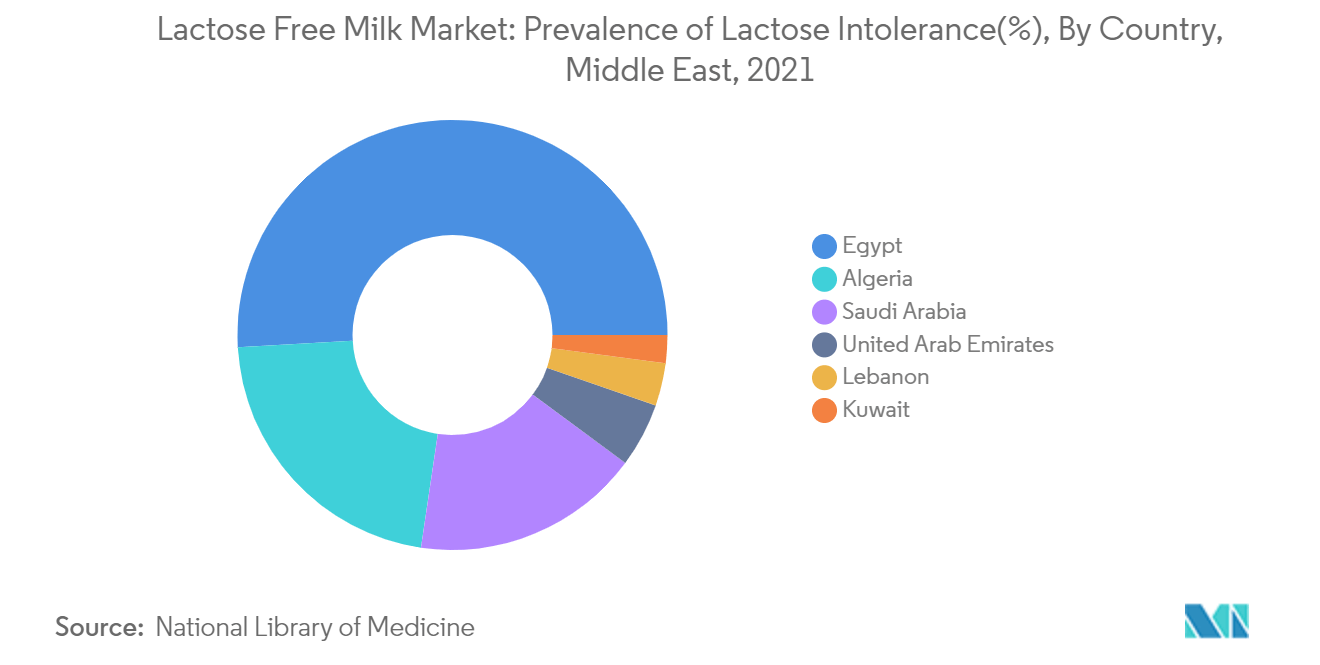
Asia-Pacific is the Fast-Growing Market
According to the data revealed by NINH (Institute for Nutrition and Health) and the CDC (Chinese Center for Disease Control and Prevention), the incidence of lactose intolerance in Chinese adults is very high, suggesting great demand for lactose-free packaged milk. On the other hand, the massive media exposure and government education on lactose intolerance and infant allergies have increased the demand for lactose-free milk and other dairy products among consumers with related health issues.
Furthermore, Japan has been undergoing major demographic and cultural transformations. In addition, the aging population and health-conscious consumers propel the demand for nutritious food and beverage, which is likely to continue boosting the demand for intolerant beverages like lactose-free milk. Though India had a comparatively low incidence of food allergies, lifestyle changes made people more prone to conditions like lactose intolerance and other food allergies. Thus, companies operating in the country are launching various lactose-free milk products to cater to the growing health-conscious consumers. For instance, In June 2022 Provilac, milk delivery firms in India launched lactose-free cow milk. Some of the leading brands offering lactose free milk across the country are Amul, Borges Natura, Raw Pressery, Only Earth, Pilk, among others.
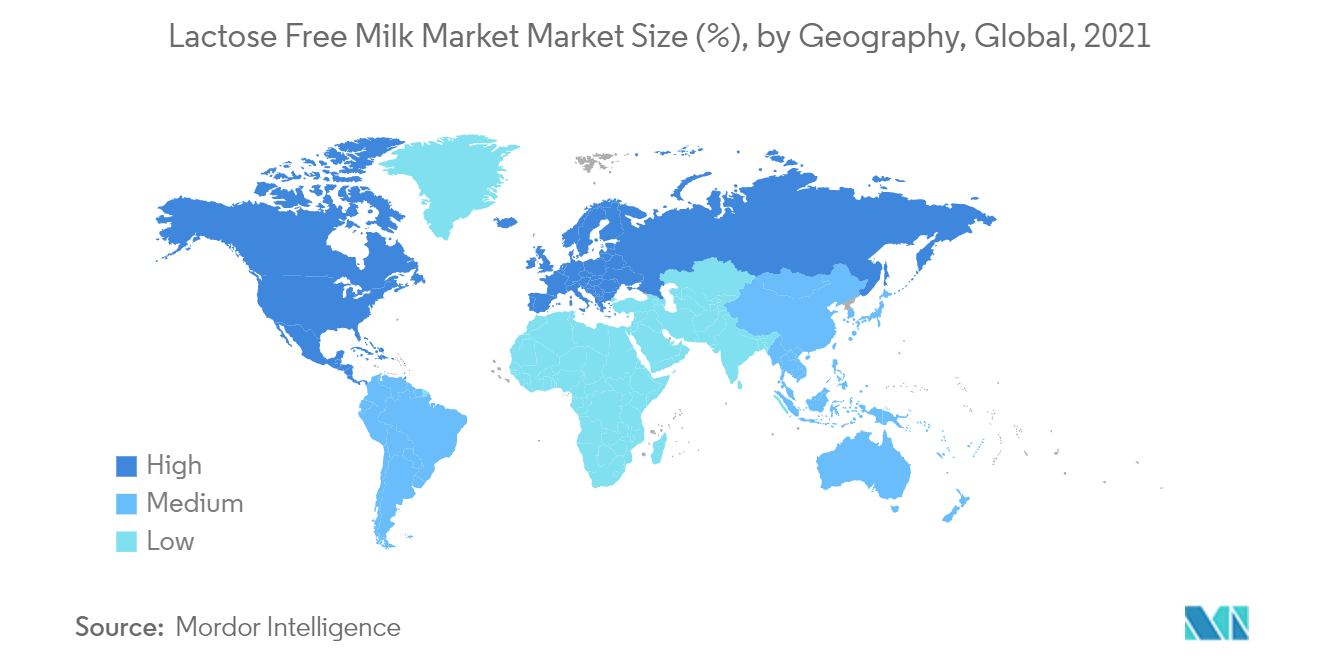
Lactose Free Milk Industry Overview
The market is highly competitive with the strong presence of regional and global players like Arla Foods amba, Johnson & Johnson, The Coca-Cola Company, Organic Valley, and Nestlé S.A., among others. Key companies are focusing on the production capacity expansion of their existing plants and investing in R&D activities to develop new products as per the changing consumer taste and preferences. Furthermore, industry participants aim to expand their geographical presence across untapped markets by increasing distribution capabilities across both offline and online channels. In addition, emerging markets are experiencing the introduction of local brands specializing in lactose free dairy products. For instance, in June 2022, Provilac, an Indian start-up launched lactose-free cow milk which is available across major cities such as Mumbai, Pune, and Hyderabad.
Lactose Free Milk Market Leaders
-
Arla Foods amba
-
Johnson & Johnson
-
The Coca-Cola Company
-
Organic Valley
-
Nestlé S.A
*Disclaimer: Major Players sorted in no particular order
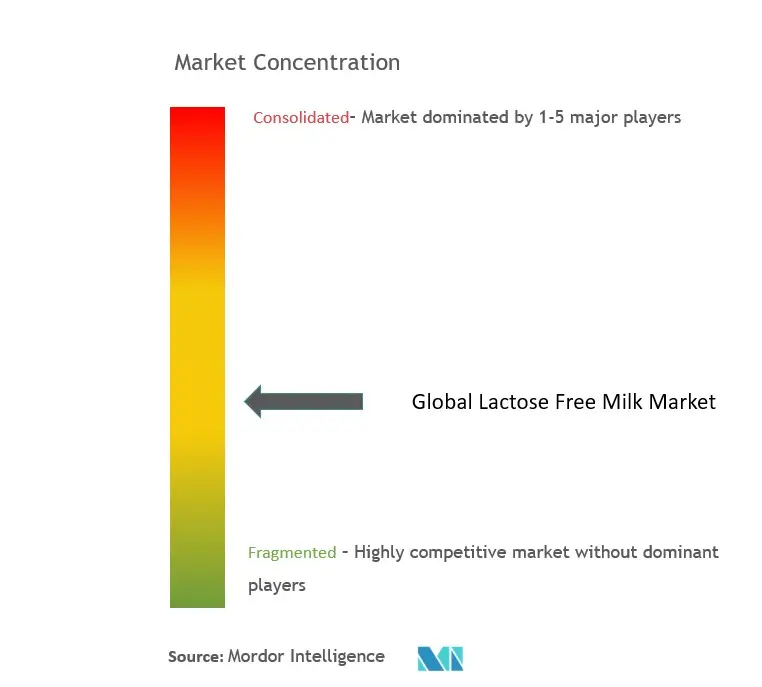
Lactose Free Milk Market News
- In August 2022, The a2 Milk Company added a lactose free product to its range of a2 Milk® products in Australia to meet the needs of one in four Australians experiencing self-diagnosed or clinically diagnosed intolerance to milk.
- In December 2020, Organic Valley launched Kid-friendly lactose free low-fat chocolate milk. The milk offers the same nutrition and pasture-raised goodness as regular milk with a new chocolate flavor with no artificial sweeteners.
- In August 2020, MilkLife, a brand of pasteurized milk from Indonesia's Global Dairi Alami, added lactose-free milk to its portfolio. The lactose-free milk is the first of its kind in Indonesia with the tagline 'enjoy dairy again with lactose-free milk'.
Lactose Free Milk Market Report - Table of Contents
1. INTRODUCTION
1.1 Study Assumptions and Market Definition
1.2 Scope of the Study
2. RESEARCH METHODOLOGY
3. EXECUTIVE SUMMARY
4. MARKET DYNAMICS
4.1 Market Drivers
4.2 Market Restraints
4.3 Porter's Five Force Analysis
4.3.1 Threat of New Entrants
4.3.2 Bargaining Power of Buyers/Consumers
4.3.3 Bargaining Power of Suppliers
4.3.4 Threat of Substitute Products
4.3.5 Intensity of Competitive Rivalry
5. MARKET SEGMENTATION
5.1 By Form
5.1.1 Liquid
5.1.2 Powder
5.2 By Category
5.2.1 Plain
5.2.2 Flavoured
5.3 By Distribution Channel
5.3.1 Supermarkets/Hypermarkets
5.3.2 Convenience/Grocery Stores
5.3.3 Online Retail Stores
5.3.4 Others
5.4 By Geography
5.4.1 North America
5.4.1.1 United States
5.4.1.2 Canada
5.4.1.3 Mexico
5.4.1.4 Rest of North America
5.4.2 Europe
5.4.2.1 United Kingdom
5.4.2.2 Germany
5.4.2.3 Spain
5.4.2.4 France
5.4.2.5 Italy
5.4.2.6 Russia
5.4.2.7 Rest of Europe
5.4.3 Asia-Pacific
5.4.3.1 China
5.4.3.2 Japan
5.4.3.3 India
5.4.3.4 Australia
5.4.3.5 Rest of Asia-Pacific
5.4.4 South America
5.4.4.1 Brazil
5.4.4.2 Argentina
5.4.4.3 Rest of South America
5.4.5 Middle East & Africa
5.4.5.1 Saudi Arabia
5.4.5.2 South Africa
5.4.5.3 Rest of Middle East & Africa
6. COMPETITIVE LANDSCAPE
6.1 Most Adopted Strategies
6.2 Market Share Analysis
6.3 Company Profiles
6.3.1 Arla Foods amba
6.3.2 The Coca-Cola Company
6.3.3 Johnson & Johnson
6.3.4 Nestle S.A.
6.3.5 Lactalis
6.3.6 Fonterra Co-operative Group Limited
6.3.7 Schwarzwaldmilch GmbH
6.3.8 Blooming Sweet Life Corp.
6.3.9 The Agropur Dairy Cooperative
6.3.10 Organic Valley
- *List Not Exhaustive
7. MARKET OPPORTUNITIES AND FUTURE TRENDS
8. IMPACT OF COVID-19 ON THE MARKET
9. DISCLAIMER
Lactose Free Milk Industry Segmentation
Lactose free milk is a milk product that contains lactase, an enzyme that helps break down lactose. It provides the essential nutrients that are present in regular dairy milk, like calcium and vitamins. As per our scope, we have covered both liquid and powder forms of lactose free milk. The global lactose Free Milk Market (henceforth referred to as the market studied) is segmented by form, category, distribution channel, and geography. By form, the market is segmented into liquid and powder. By category, the market is segmented into plain and flavored. Based on the distribution channel, the market studied is segmented into supermarkets/hypermarkets, convenience stores, online stores, and other distribution channels.
It provides an analysis of emerging and established economies across the world, comprising North America, Europe, South America, Asia-Pacific, and Middle East and Africa. For each segment, the market sizing and forecasts have been done based on value (in USD million).
| By Form | |
| Liquid | |
| Powder |
| By Category | |
| Plain | |
| Flavoured |
| By Distribution Channel | |
| Supermarkets/Hypermarkets | |
| Convenience/Grocery Stores | |
| Online Retail Stores | |
| Others |
| By Geography | |||||||||
| |||||||||
| |||||||||
| |||||||||
| |||||||||
|
Lactose Free Milk Market Research FAQs
What is the current Lactose Free Milk Market size?
The Lactose Free Milk Market is projected to register a CAGR of 9.41% during the forecast period (2024-2029)
Who are the key players in Lactose Free Milk Market?
Arla Foods amba , Johnson & Johnson , The Coca-Cola Company , Organic Valley and Nestlé S.A are the major companies operating in the Lactose Free Milk Market.
Which is the fastest growing region in Lactose Free Milk Market?
Asia-Pacific is estimated to grow at the highest CAGR over the forecast period (2024-2029).
Which region has the biggest share in Lactose Free Milk Market?
In 2024, the North America accounts for the largest market share in Lactose Free Milk Market.
What years does this Lactose Free Milk Market cover?
The report covers the Lactose Free Milk Market historical market size for years: 2019, 2020, 2021, 2022 and 2023. The report also forecasts the Lactose Free Milk Market size for years: 2024, 2025, 2026, 2027, 2028 and 2029.
Lactose Free Milk Industry Report
Statistics for the 2024 Lactose Free Milk market share, size and revenue growth rate, created by ����vlog��ý™ Industry Reports. Lactose Free Milk analysis includes a market forecast outlook to 2029 and historical overview. Get a sample of this industry analysis as a free report PDF download.



